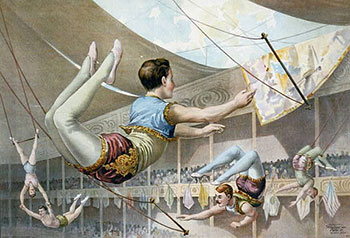- Critical Metric: Critical Responses (Steve Souders) — new UX-focused metrics […] Start Render and Speed Index.
- Automatically Scrape and Import a Table in Google Spreadsheets (Zach Klein) — =ImportHtml("URL", "table", num) where “table” is the element name (“table” or a list tag), and num is the number of the element in case there are multiple on the page. Bam!
- Getting Visibility on the iBeacon Problem (Brooklyn Museum) — the Internet of Things is great, but I wouldn’t want to have to update its firmware. As we started to troubleshoot beacon issues, we wanted a clean slate. This meant updating the firmware on all the beacons, checking the battery life, and turning off the advanced power settings that Estimote provides. This was a painstakingly manual process where I’d have to go and update each unit one-by-one. In some cases, I’d use Estimote’s cloud tool to pre-select certain actions, but I’d still have to walk to each unit to execute the changes and use of the tool hardly made things faster. Perhaps when every inch of the world is filled with sensors, Google Street View cars will also beam out firmware updates.
- NLP Meets Deep Learning — easy to follow slide deck talking about how deep learning is tackling NLP problems.
"ux" entries


Four short links: 24 February 2016
UX Metrics, Page Scraping, IoT Pain, and NLP + Deep Learning


Four short links: 12 February 2016
Slack's Voice, Accessible Experiences, IoT Design, and What I Learned
- Webstock: Bug Fixes & Minor Improvements — notes from Anna Pickard’s talk about being the voice of Slack, recorded by Luke Wroblewski.
- Webstock: The Map & The Territory — notes from Ethan Marcotte’s talk about making accessible experiences, recorded by Luke Wroblewski.
- Webstock: The Shape of Things — notes from Tom Coates’s talk about designing for the Internet of Things, recorded by Luke Wroblewski.
- Today I Learned — A collection of concise write-ups on small things I learn day to day across a variety of languages and technologies. These are things that don’t really warrant a full blog post.


Four short links: 1 February 2016
Curation & Search, Developer Tenure, AI/IA History, and Catapulting Drones
- Curation & Search — (Twitter) All curation grows until it requires search. All search grows until it requires curation.—Benedict Evans. (via Lists are the New Search)
- Average Developer Tenure (Seattle Times) — The average tenure of a developer in Silicon Valley is nine months at a single company. In Seattle, that length is closer to two years. (via Rands)
- An Interview with John Markoff (Robohub) — the interview will give you a flavour of his book, Machines of Loving Grace, a sweet history of AI told through the stories of the people who pioneered and now shape the field.
- Catapult Drone Launch (YouTube) — utterly nuts. That’s an SUV off its rear wheels! (via IEEE)

Chrissie Brodigan on user research at GitHub
The O’Reilly Design Podcast: Product development, user research, and identifying blindspots.
Subscribe to the O’Reilly Design Podcast, our podcast exploring how experience design—and experience designers—are shaping business, the Internet of Things, and other domains.
In this week’s Design Podcast episode, I sit down with Chrissie Brodigan, manager of user experience research at GitHub. Brodigan will be be speaking at OReilly’s inaugural Design Conference. In this episode, we talk about user research and product development at Github, and the blindspots in product development and organizational development.
Here are a few highlights from our conversation:
Our internal philosophy around research is about when we make our design decisions, we come up with hypotheses about how that design change will impact behavior as well as user experience. We may need to add a particular control to the workflow, but if it has a negative consequence on the overall experience of our users, we may decide that that’s not the right decision for us. Even if it’s helpful in one area, it causes unhappiness in another. We measure impact with controlled experiments, which a lot of people would refer to as ‘AB testing.’ We do do some variance testing, which is short term, but we also do longitudinal analysis, which is to study a cohort over a longer period of time. Internally, we’re always asking ourselves ‘Why?’


Four short links: January 15, 2016
Bitcoin Resolution, Malware Analysis, Website Screw-Ups, and Dronecode.
- The Resolution of the Bitcoin Experiment — If you had never heard about Bitcoin before, would you care about a payments network that: Couldn’t move your existing money; Had wildly unpredictable fees that were high and rising fast; Allowed buyers to take back payments they’d made after walking out of shops, by simply pressing a button (if you aren’t aware of this “feature” that’s because Bitcoin was only just changed to allow it); Is suffering large backlogs and flaky payments; … which is controlled by China; … and in which the companies and people building it were in open civil war?
- Malware Analysis Repository — the materials as developed and used by RPISEC to teach Malware Analysis at Rensselaer Polytechnic Institute in Fall 2015.
- How Websites Screw Up Experiences (Troy Hunt) — they’re mostly signs of a to-the-death business model.
- Dronecode Moves Forward — Linux Foundation’s Dronecode project has 51 members, is used commercially, and has technical working groups looking at camera and gimbal controls; airspace management; and hardware/software interfaces.

Mike Kuniavsky on the tectonic shift of the IoT
The O'Reilly Radar Podcast: The Internet of Things ecosystem, predictive machine learning superpowers, and deep-seated love for appliances and furniture.
Subscribe to the O’Reilly Radar Podcast to track the technologies and people that will shape our world in the years to come.
In this week’s episode of the Radar Podcast, O’Reilly’s Mary Treseler chats with Mike Kuniavsky, a principal scientist in the Innovation Services Group at PARC. Kuniavsky talks about designing for the Internet of Things ecosystem and why the most interesting thing about the IoT isn’t the “things” but the sensors. He also talks about his deep-seated love for appliances and furniture, and how intelligence will affect those industries.
Here are some highlights from their conversation:
Wearables as a class is really weird. It describes where the thing is, not what it is. It’s like referring to kitchenables. ‘Oh, I’m making a kitchenable.’ What does that mean? What does it do for you?
There’s this slippery slope between service design and UX design. I think UX design is more digital and service design allows itself to include things like a poster that’s on a wall in a lobby, or a little card that gets mailed to people, or a human being that they can talk to. … Service design takes a slightly broader view, whereas UX design is — and I think usefully — still focused largely on the digital aspect of it.


Four short links: 6 October 2015
System Intuition, Magic is Power, Predicting Behaviour, Payment Required
- Flux: New Approach to System Intuition (LinkedIn) — In general, we assume that if anything is best represented numerically, then we don’t need to visualize it. If the best representation is a numerical one, then a visualization could only obscure a quantifiable piece of information that can be measured, compared, and acted upon. Anything that we can wrap in alerts or some threshold boundary should kick off some automated process. No point in ruining a perfectly good system by introducing a human into the mix. Instead of numerical information, we want a tool that surfaces relevant information to a human, for situations that would be too onerous to create a heuristic. These situations require an intuition that we can’t codify.
- Jumping to the End: Practical Design Fiction (Vimeo) — “Magic is a power relationship” — Matt Jones on the flipside of hiding complex behaviours from users and making stuff “work like magic.” (via Richard Pope)
- Predicting Daily Activities from Egocentric Images Using Deep Learning — aka “people wear cameras and we can figure out what they’re going to do next.”
- 402: Payment Required (David Humphrey) — The ad blocking discussion highlights our total lack of imagination, where a browser’s role is reduced to “render” or “don’t render.” There are a whole world of options in between that we should be exploring.

Understanding the experience design of consumer IoT products
Great UX for IoT requires cross-discipline collaboration between design, technology, and business.
Download a free copy of our new report “User Experience Design for the Internet of Things,” by Claire Rowland, to learn about a framework for understanding the UX of consumer IoT products. Note: this post is an excerpt from the report.
 When we think of design for connected products, we tend to focus on the most visible and tangible elements. These are the industrial design of connected devices, and the user interfaces (UIs) found in mobile and Web apps and on the devices themselves.
When we think of design for connected products, we tend to focus on the most visible and tangible elements. These are the industrial design of connected devices, and the user interfaces (UIs) found in mobile and Web apps and on the devices themselves.
They are important concerns, which have a major impact on the end user’s experience of the product. But they’re only part of the picture. You could create a beautiful UI, and a stunning piece of hardware, and users could still have a poor experience of the product as a whole.
Designing for IoT is inherently more complex than Web service design. Some of this is to do with the current state of the technology. Some of this reflects our as-yet immature understanding of compelling consumer IoT value propositions. Some of this stems from the fact that there are more aspects of design to consider. Tackling them independently creates an incoherent user experience (UX).
Designing a great connected product requires a holistic approach to user experience. It spans many layers of design, not all them immediately visible. More than ever, it requires cross-discipline collaboration between design, technology, and business. Great UX may start with understanding users. But the designer’s ability to meet those users’ needs depends on the technology enablers, business models, and wider service ecosystem. Read more…


Four short links: 3 September 2015
Lock Patterns, Peer-to-Peer Markets, Community Products, and Speech Recognition
- The Surprising Predictability of Android Lock Patterns (Ars Technica) — people use the same type of strategy for remembering a pattern as a password
- Peer to Peer Markets (PDF) — We discuss elements of market design that make this possible, including search and matching algorithms, pricing, and reputation systems. We then develop a simple model of how these markets enable entry by small or flexible suppliers, and the resulting impact on existing firms. Finally, we consider the regulation of peer-to-peer markets, and the economic arguments for different approaches to licensing and certification, data, and employment regulation.
- 16 Product Things I learned at Imgur — You can A/B test individuals, but it’s nearly impossible to A/B test communities because they work based on a mutually reinforcing self-conception. Use a combination of intuition (which comes from experience), talking to other community managers and 1:1 contact with a sample of your community. But you’ll still be wrong a lot.
- kaldi — a toolkit for speech recognition written in C++ and licensed under the Apache License v2.0

Design is how users feel when experiencing products
The O’Reilly Design Podcast: Cindy Alvarez on emotion, user research, and why Craigslist is great design.
Subscribe to the O’Reilly Design Podcast, our podcast exploring how experience design — and experience designers — are shaping business, the Internet of Things, and other domains.
 In this week’s Design Podcast episode, I sit down with Cindy Alvarez, a designer at Microsoft, author of Lean Customer Development, and member of our program committee for O’Reilly’s first design conference.
In this week’s Design Podcast episode, I sit down with Cindy Alvarez, a designer at Microsoft, author of Lean Customer Development, and member of our program committee for O’Reilly’s first design conference.
Alvarez talks about how design is changing, how the approach to design at Microsoft is changing, and user research misperceptions and challenges. She also offers advice to those who are insisting all designers should code.
Here are a few highlights from our chat:
Steve Jobs has said that, “Design is not how it looks, it’s how it works.” I would go one step further and say, “Design is how you work.” When you’re using something, how do you feel … How are you feeling more capable — do you feel smarter? Do you feel stronger? Do you feel stupider? Design is how you feel when you are using things or having experiences.
The ‘butt-brush’ effect comes from the wonderful Paco Underhill book Why We Buy. … Specifically, the butt-brush phenomenon is people looking at products that they really wanted to buy, but the store layout made it so people were bumping into them. That was such a strong push to get them to abandon what they were doing … that they’d just get up and walk away. He theorized about people feeling vulnerable, and undoubtedly there’s some sort of evolutionary thing about woolly mammoths sneaking up on us or something. I think it’s just, on a more base level, people feel clumsy. They feel fat, they feel clumsy and awkward, and we don’t like that at all.

